Tested: Ryzen Mobile Gets Better Drivers, Finally - porternoust1988
Today we'ray looking at the really first set of official Ryzen Transferable GPU drivers to come from AMD. Owners of Ryzen Mobile laptops have been wait for this day for months now, indeed the fact these drivers are finally out is corking tidings for the small but growing community of Ryzen laptop early adopters.
Lashkar-e-Taiba's backtrack for a moment and catch you up with the chuck-full story of Ryzen Mobile laptops. The first devices to use Ryzen Mobile launched at the nates of 2017, and while performance in some cases was pretty well thanks to the herculean integrated GPU, IT apace became apparent that lic was still requisite happening the software side. GPU-accelerated productivity apps crashed frequently or didn't do work at altogether, at that place were issues playing some games along the laptops contempt having enough GPU HP, plus there were plenty of odds and ends that needed tidying finished with new drivers. The computer hardware was there, it just wasn't very polished and there was a quintessential "early adopter" feel to the platform.
Finished time, it became apparent that AMD and the OEMs weren't going to patch these problems in a timely fashion. AMD blamed the OEMs for shirking at pushing kayoed software updates, and that's true to an extent, but realistically the platform needed comme il faut drivers in stock through AMD right away. End-to-end 2018 users discovered that hacking AMD's newer APU drivers to lic happening their Ryzen Mobile laptops delivered a more stable experience with better performance. But this was an unofficial, hacked together solution rather than the companies involved straightaway addressing the problems through official update streams. Not skilful plenty.

Those who had bought Ryzen Mobile laptops for the fast integrated GPU in a outboard form factor quickly became frustrated. Users became annoyed at the want of driver optimizations for new games, which were available for APU and discrete GPU owners. That vexation grew into anger as many systems hadn't received a single GPU number one wood update for a year, while those with Nvidia or even Intel GPUs received reasonably unconstipated updates.
Thankfully, AMD listened and has finally launched official Ryzen Mobile GPU drivers that you can download right away from AMD.com (or from TechSpot's drivers section, of course). These drivers can be installed happening any Ryzen Mobile device, whether that's a new system, or matchless of the original Ryzen laptops. It's non locked down past OEMs, IT's designed to work as a generic, updated device driver for all. It may have taken a year but at least the drivers are right away available.
Naturally, we wanted to test these new drivers and compare them to the originals that shipped with Ryzen Mobile laptops and past didn't puzzle out updated for ages. We hush up have our original HP Envy x360 15" with the Ryzen 5 2500U inside, so when the rising drivers became available we installed them, updated a whole clustering of other things like Windows, BIOS and other utilities that had received updates since we reviewed the system, and put the updates through their paces.
The driver version we're testing is Radeon Software version 19.2.3, the latest version as of writing. We're going to travel direct our accustomed suite of laptop benchmarks to come across how the HP Envy x360 performs compared to how it launched back in 2017. There's also active to atomic number 4 whatever plot examination with direct before/after comparisons focusing on improvements from the drivers alone.
Application Performance
We won't bore you with the results from our CPU-limited workloads like PCMark 10, video encoding, MATLAB, 7-Zip, etc.. There is nary conflict in functioning between the original launch state of Ryzen Mobile, and today with the stylish drivers. This makes sense, the drivers are GPU drivers and many of the apps we benchmark don't use the GPU at all. So if you're expecting a couple of more Cinebench points from updating Windows, installing a new BIOS, and grabbing Radeon Software 19.2.3, think again.
Where the benefits are apparent is in GPU-accelerated productiveness workloads. Blender is a prime example. Support when we reviewed the Envy x360, we could only convey Blender to successfully complete our bench mark render once. All other time it crashed or stalled, it was a disaster. With the update -- and without updating the Blender application itself -- the benchmark now completes every single metre. So that's a massive constancy improvement.

Performance is also improved. Our Blender benchmark, which runs exclusively on the GPU, was 17% faster after all of these updates. That's a pretty handy improvement, placing AMD's integrated GPU some the mark of Intel's latest Core i7-8565U in a 25W constellation running the workload on the CPU. Given this is comparison a Ryzen 5 APU to a generally much faster Intel Core i7, that's a jolly good result purely from software tweaks.
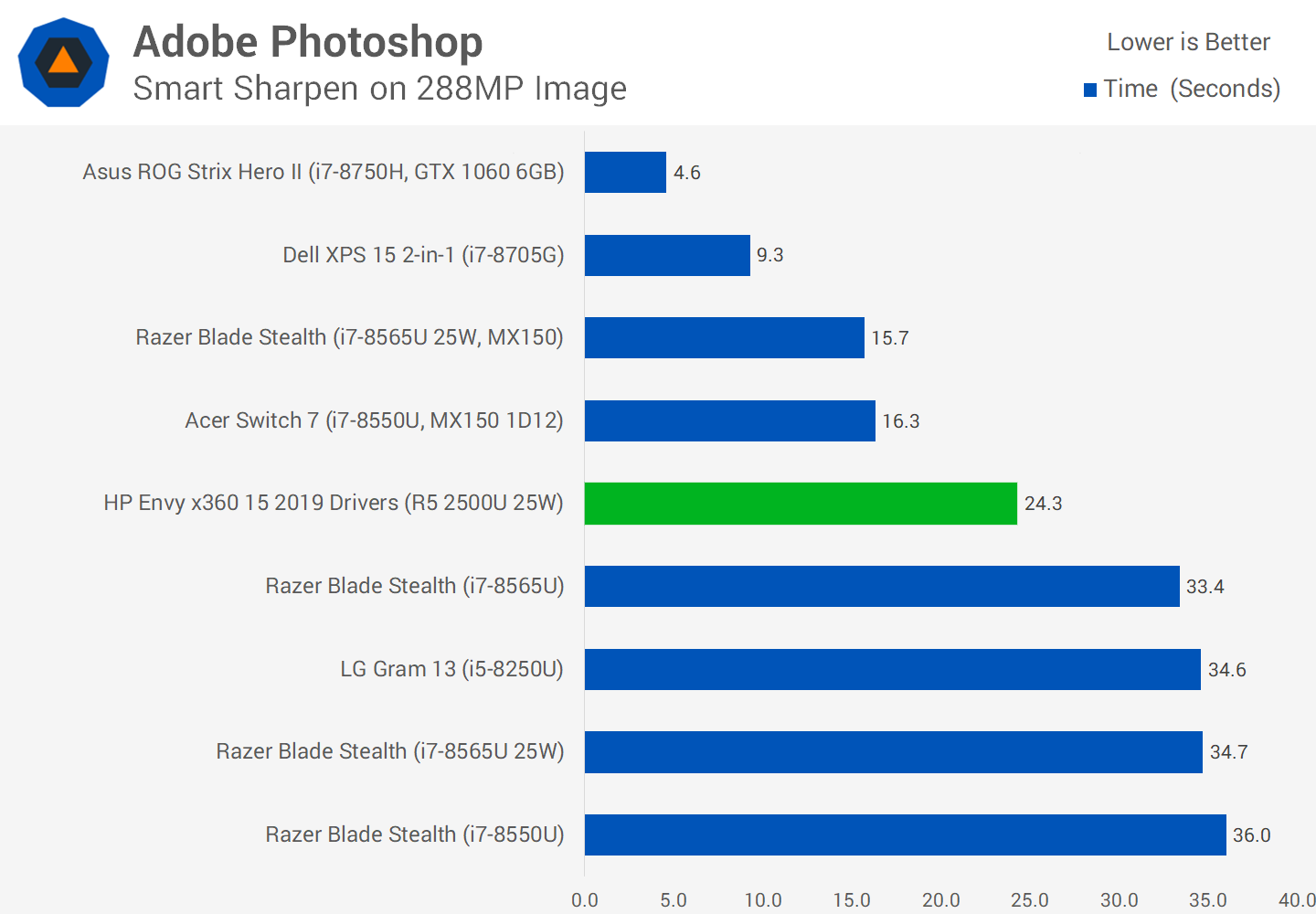
Even better is the ability to run around benchmarks that didn't work at all previously. Adobe Photoshop, for example, had problems with acceleration with the first set of drivers. Now information technology industrial plant, allowing the Ryzen 5 2500U to slightly outperform the Core i5-8250U in our Iris Slur exam.
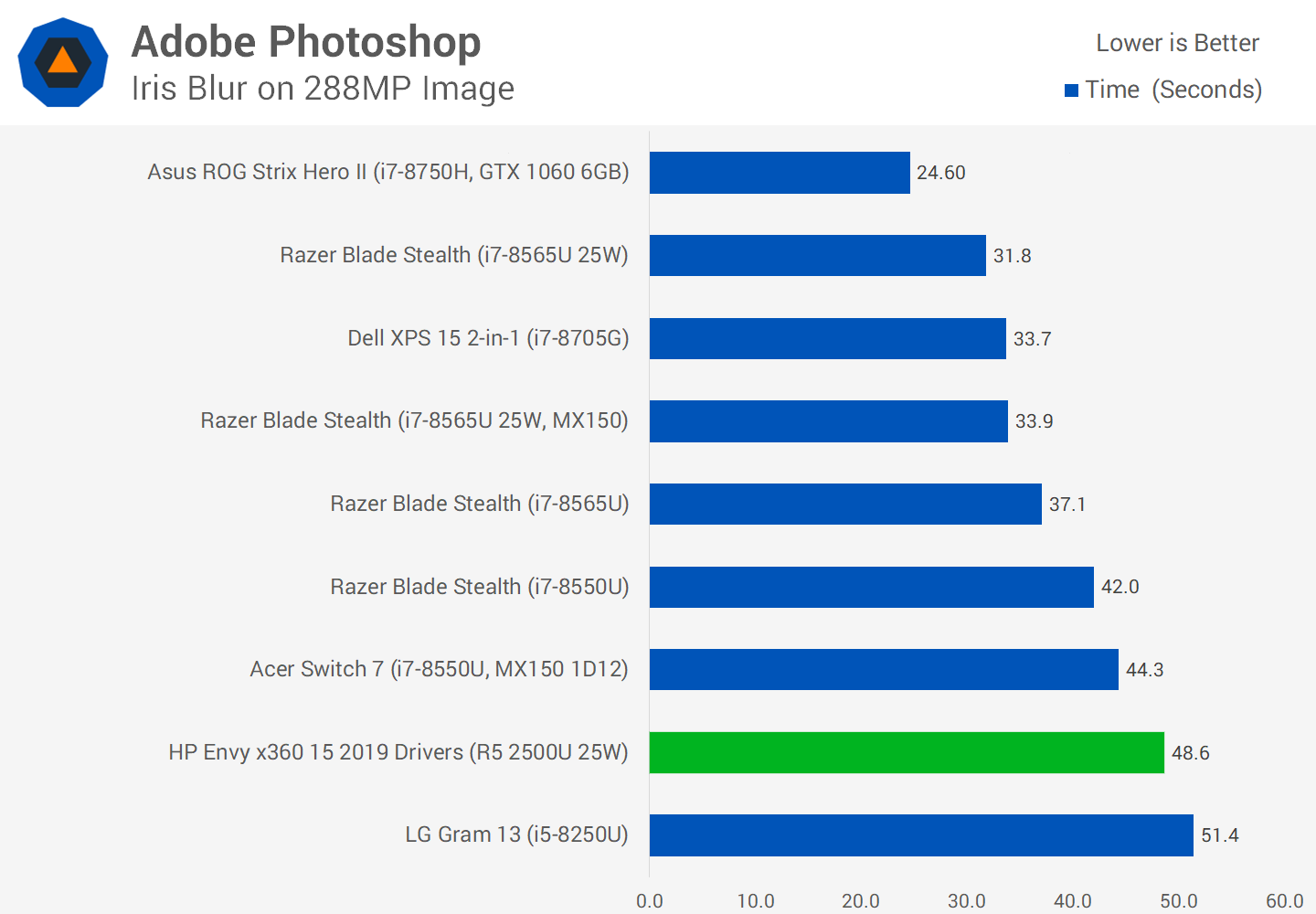
CompuBench is some other workload we had a good deal of problems with. Half the tests didn't work, the other half would oft crash, to the tune of about 10 crashes for every 1 temporary benchmark run. With the in vogue drivers, there are still a some crashes, but they are infrequent and generally it is straightaway possible for the whole benchmark suite to run without way out. Carrying out ISN't improved only better stability is wanted.
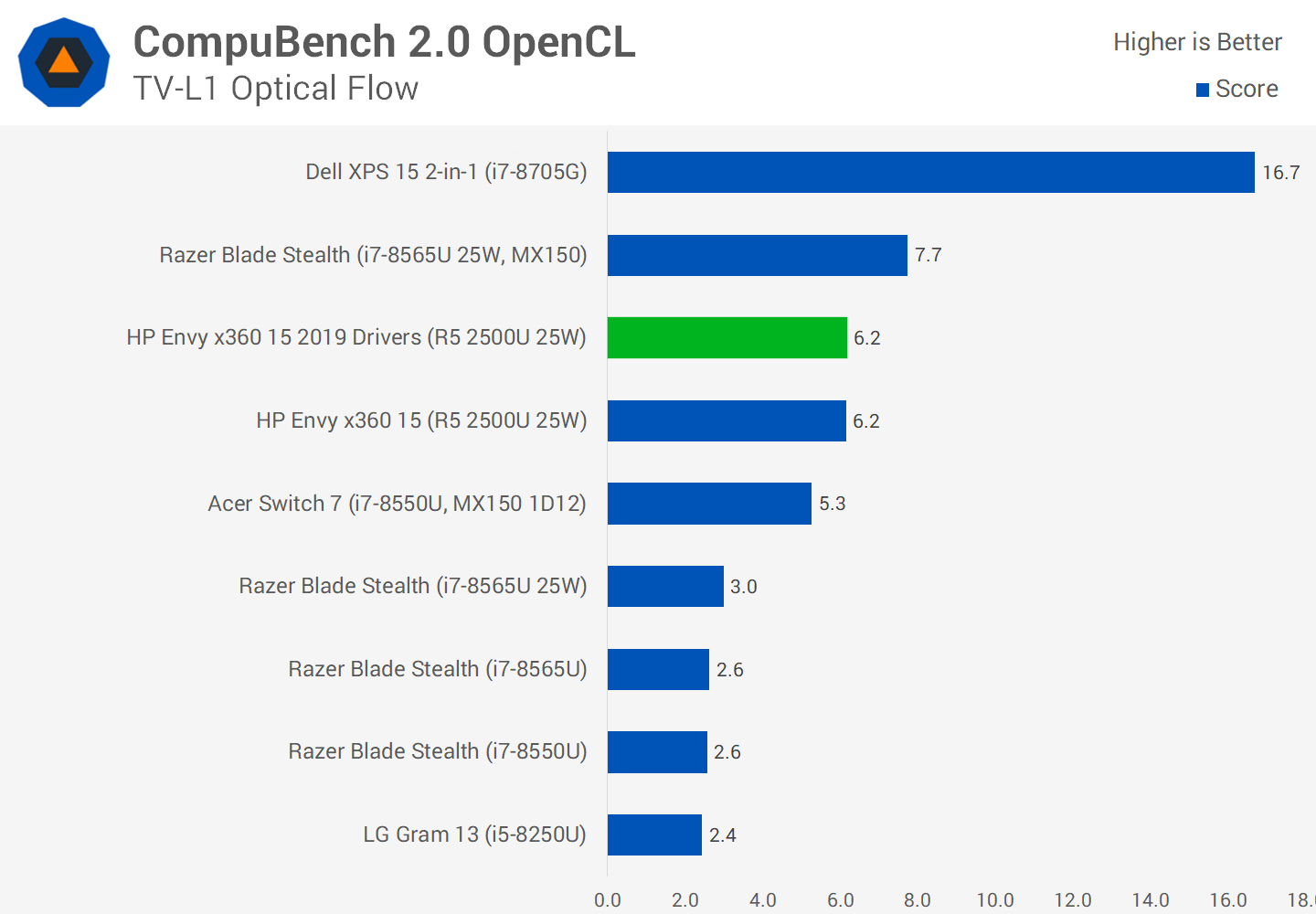
We still had issues with Adobe First though. Even with all the latest updates, the Ryzen 5 2500U is still ineffectual to GPU speed up the all-important Lumetri people of color effect in Premiere with 4K footage. Lumetri is a widely used effect among creators for color correction, and while applying this to 4K footage might appear intensive, it can be easily GPU accelerated on Intel's integrated artwork and all of Nvidia's recent separate GPUs.
The effect not temporary with Ryzen Mobile is a definite outlier, although Lumetri is bizarrely compatible with 1080p footage and below with this processor. Many other GPU speeded up effects also bring on.

However our Premiere bench mark uses 4K footage and Lumetri color effects. This means even now, Ryzen Mobile gets destroyed by a mere Intel Core i5-8250U, attractive over 30 minutes to render on the CPU only. Without Lumetri personal effects, the Ryzen 5 2500U is quicker. We've flagged this issue to AMD (again) then hopefully their number one wood team will investigate it OR at least provide an explanation as to wherefore this effect is ill-sorted with Ryzen Mobile GPUs.
Gambling
Soul-stirring on to games, again we want to stress how much break this new driver is with regards to stability, crashes and other technical issues. Previously, we had all sorts of problems with Ryzen Mobile gaming. Sometimes we'd load a pun and the GPU would underclock itself compared to the late load. Sometimes a spunky would solely work fully screen mood and present artifacts when victimisation borderless windowed mode. Sometimes a game would consume Vsync involuntary connected despite the option organism hors de combat everywhere. Taxonomic group crashes and arrangement reboots were common. It was a disaster even in lightweight games like Fortnite.
With the latest drivers, we haven't veteran any of these issues. Complete the games that we had trouble with now work fine. Crashes are gone. Basic functionality works. It's similar the system has gone from an alpha pre-release set of software, to a proper finalized driver that's been tested past Thomas More than two people. Information technology's great.
In terms of gaming performance, AMD has claimed this is where users should see big improvements over the launch drivers, specifically 17% average functioning gains in Esports titles when going from driver version 17.40 to 19.2.3. However all our preceding tests were through with version 17.7 not the even experienced 17.4, then let's find how those margins look like...

With Fortnite, we listed a small 5% improvement on average framerates and no melioration to 1% lows, with our v17.7 data coming from runs where the game did not randomly underclock the GPU. A 5% melioration is fine-grained, but the actual improvement your getting is that consistent performance all time you boot the game. The GPU motionless provides a good feel for at 1080p with unrefined settings.
When testing Cesium:GO we proverb none difference in performance before and aft the driver update.
Performance is much better in Civilization VI however, increasing by 15%. For a game that we think is fit suited to a laptop computer form factor, getting up almost the 60 FPS mark in intensive scenarios at native 1080p is a really good result. The improvement to 1% lows is fantastic.

Testing GTA V saw no departure in common frame rates, but a handy increase in 1% underslung carrying out that allows the biz to track down smoother in general. While you'll still have to run on the last-place settings, performance is respectable from a David Low-office APU.
Metro: Last Bright is the most operose back we time-tested despite existence an older gamey at this charge. Average out performance small by ~9 percentage this time which is disappointing, however this was compensated with a large betterment to 1% lows, allowing the game to run more smoothly.
Other Improvements
Battery life should also be mentioned. Ryzen Seaborne was ne'er amazing from a battery spirit linear perspective, and early systems tended to have strange idle clock behavior, such American Samoa idling besides high on the GPU. That's been resolved, which in a some battery benchmarks resulted in capable a 7% improvement. Nothing awe-inspiring, but we were jiggered to see an improvement in the least.
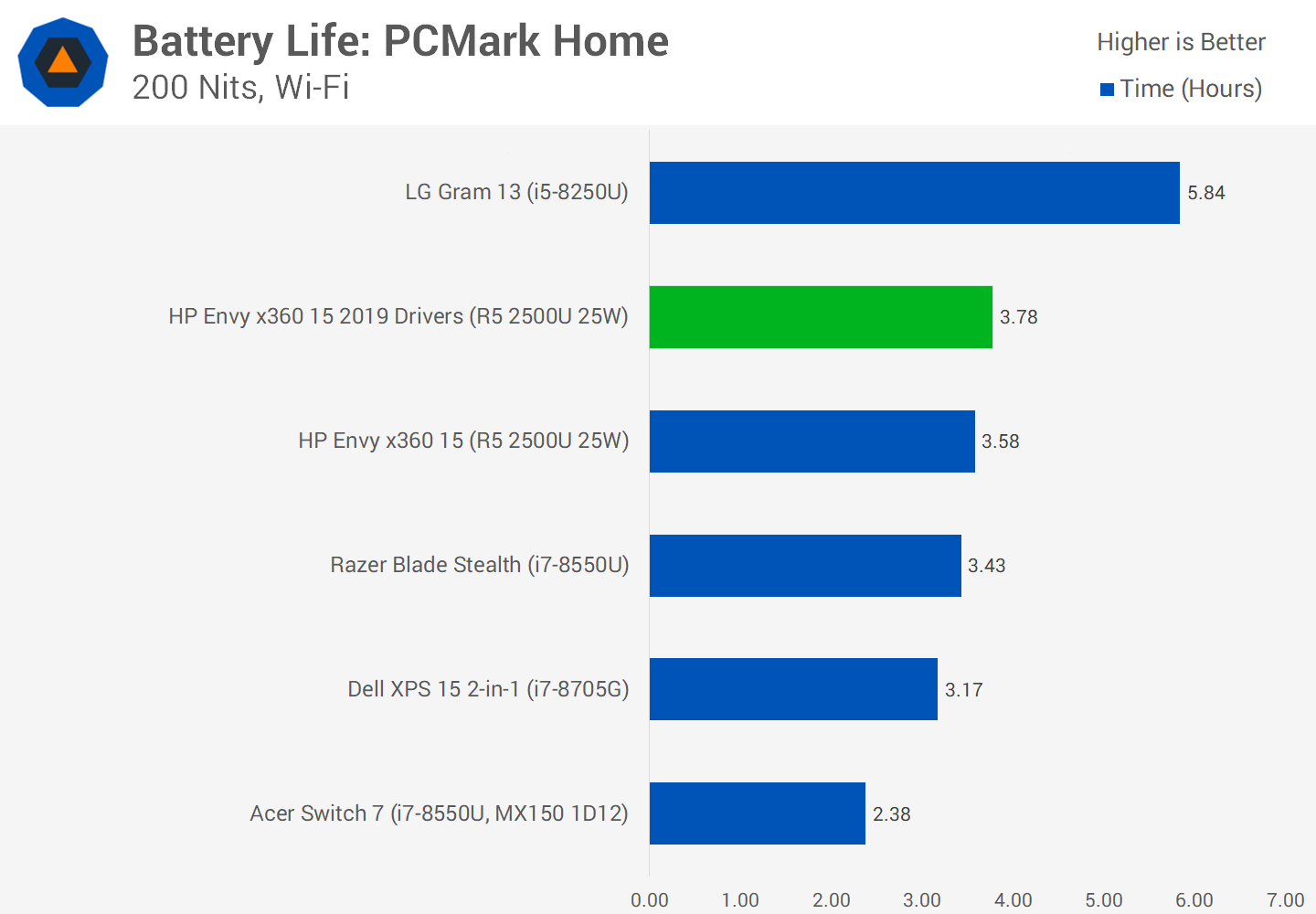
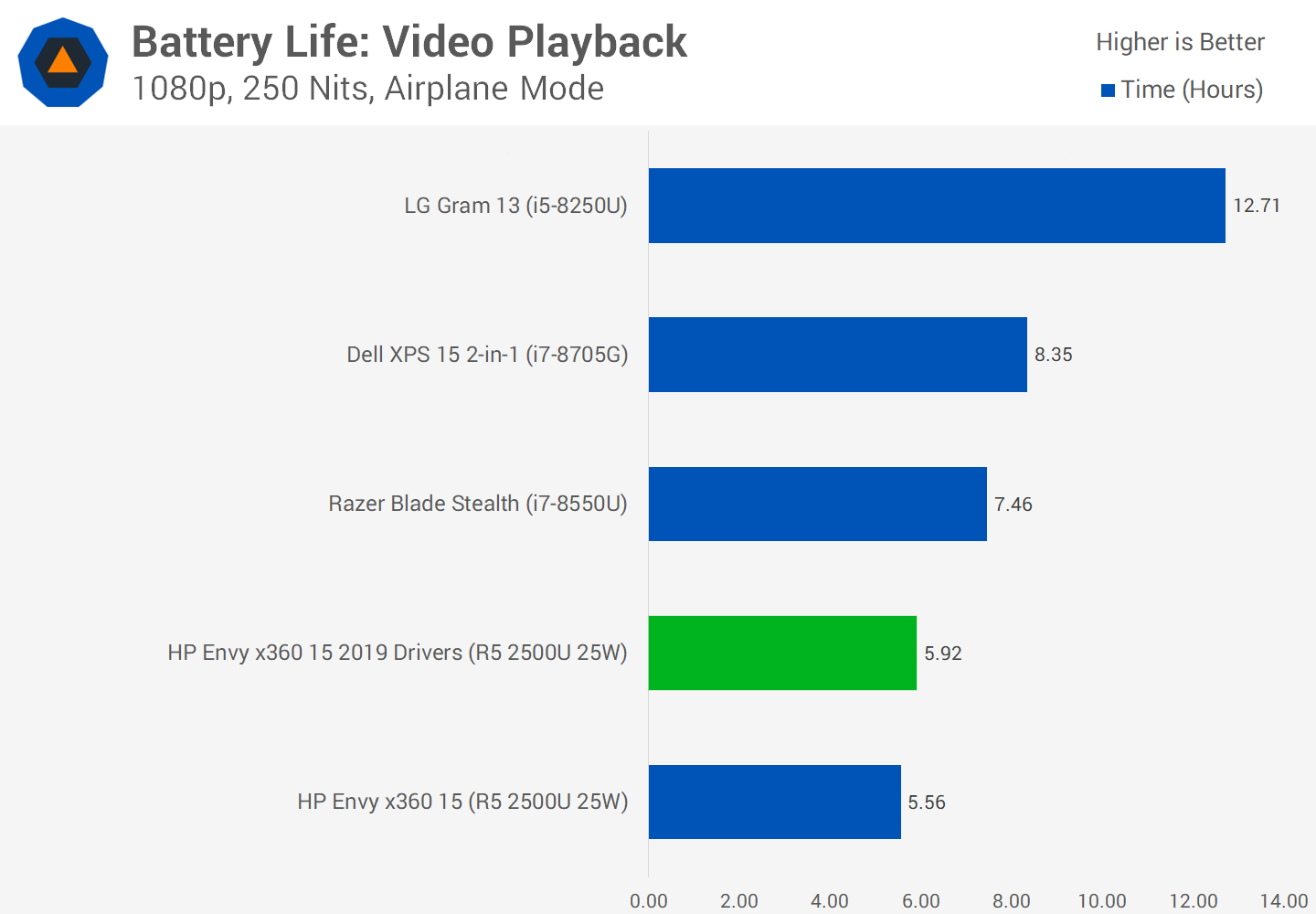
Overall the fresh drivers bring a number of improvements and moving forward all new Radeon GPU driver release will effectively work with Ryzen Mobile which is how it should live. Execution has seen insignificant gains with a few outliers, notably Blender and Civilization VI, that byword gains of about 15%.
The more important improvements come in the form of stability and bug fixes. Almost every issue we had with Ryzen Mobile has been solved. Games are more stable and redeem Sir Thomas More consistent carrying into action. Information technology's not arrant yet, at that place are yet issues with Lumetri in Premiere and a few apps still hang or crash more much than we'd require, only overall this is a large step gardant.

Patronage for some of AMD's number one wood features that are accessible on separate GPUs, so much as ReLive are non available yet, which may let down some, however the drivers are still a do work in progress and it seems AMD spent most of their efforts on stability and performance, with features to seminal fluid later.
And that's the sweetheart of this new driver ecosystem for Ryzen Mobile. You won't own to time lag months for a new GPU driver for their laptop Apus, we should expect monthly updates in line with their screen background cards. Finished time we await bugs to be patched, features to get added and performance to improve. Or at least that's the promise, we'll have to see this play taboo, merely this is a good best step.
It shouldn't have taken AMD this long to get their act jointly on Ryzen Mobile. Early adopters to be sure didn't see the superior of Ryzen, but bestowed the company's succeeder along the background and server household of processors, information technology's only ratiocinative they try out to gain ground along the large laptop market too. American Samoa the Ryzen Mobile platform grows this shouldn't be Eastern Samoa much of an come forth running forward.
Source: https://www.techspot.com/article/1802-amd-ryzen-mobile-drivers/
Posted by: porternoust1988.blogspot.com


0 Response to "Tested: Ryzen Mobile Gets Better Drivers, Finally - porternoust1988"
Post a Comment